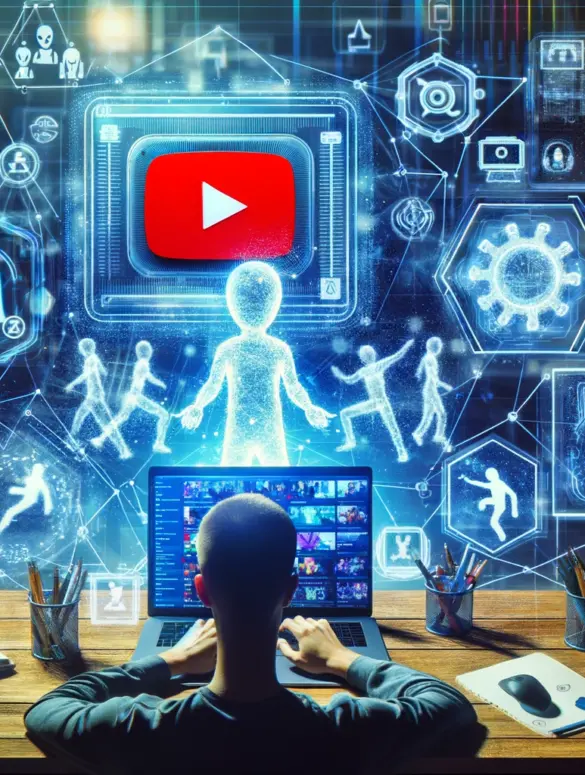YouTube has become one of the most influential platforms shaping popular culture and trends. Over 2 billion logged-in users visit YouTube every month, watching over a billion hours of video daily. With such a massive viewership, understanding emerging trends on YouTube provides invaluable insights.
Identifying popular topics and patterns in their early stages allows creators and marketers to align their content strategy for optimal growth. However, with over 500 hours of video uploaded to YouTube every minute, accurately predicting trends is extremely challenging. This is where artificial intelligence (AI) comes in.
AI refers to computer systems that can perform tasks normally requiring human intelligence, such as visual perception, speech recognition, and decision-making. AI includes a range of technologies like machine learning, neural networks, and natural language processing. When applied to YouTube data, AI can uncover hidden trends and forecast future popularity.
This guide will explore how to leverage AI to predict YouTube trends. It covers key concepts in AI, step-by-step instructions for implementation, real-world case studies, and ethical considerations. Follow along to gain a strategic advantage with data-driven trend analysis.
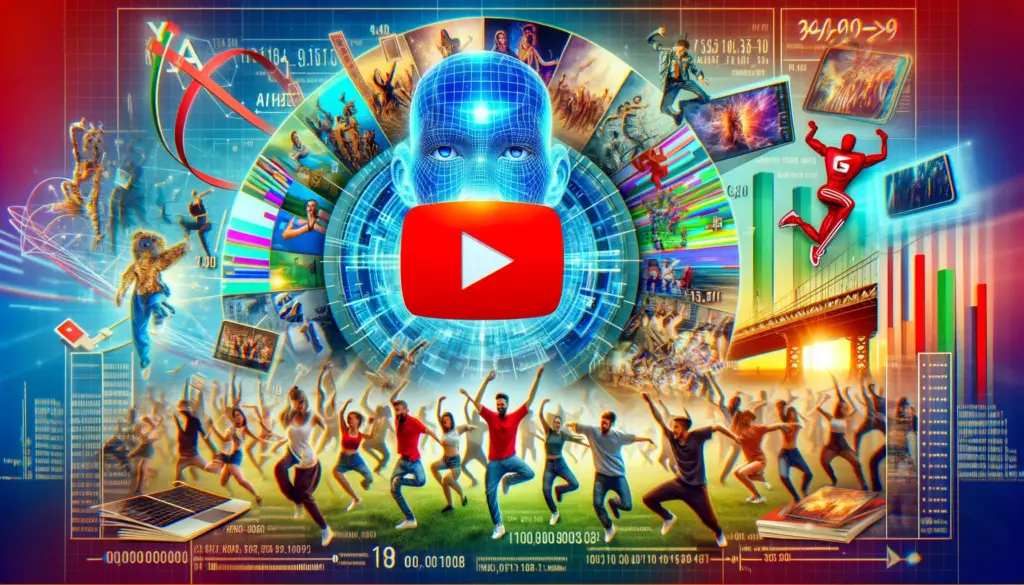
- Understanding YouTube Trends
- The Role of AI in Predicting YouTube Trends
- Practical Guide to Using AI for YouTube Trend Analysis
- Advanced Techniques in AI Trend Prediction
- Ethical Considerations and Bias in AI
- Case Studies and Real-World Applications
- Future of AI in YouTube Trend Analysis
- Conclusion
- FAQs Related to Predicting YouTube Trends Using AI
Understanding YouTube Trends
Before diving into AI predictive analytics, let’s build foundational knowledge of YouTube trends.
A. What Are YouTube Trends?
YouTube trends refer to popular topics, themes, and content that gain significant viewership and engagement over a short timeframe. Rather than gradual growth, trends spike rapidly, often spreading through social channels in viral fashion before possibly fading again.
Some examples of recent YouTube trends include:
- Dance challenges like the “In My Feelings Challenge.”
- Viral video memes like the “Harlem Shake.”
- Music hits like Luis Fonsi’s “Despacito.”
- Popular YouTuber collaborations like MrBeast burger taste tests.
- Gaming trends like Among Us streams and playthroughs.
These are just a few examples of the diverse trending content on YouTube. Trends capture the platform’s ever-shifting zeitgeist across genres, formats, and cultures.
B. Why Predicting Trends is Crucial for Success
Understanding emerging trends ahead of the curve provides substantial competitive advantage for creators and marketers. Riding these waves of popularity instead of chasing them leads to major benefits:
Higher Audience Engagement
Videos aligned with rising trends can leverage existing interest to boost impressions and views. Viewers drawn into trending topics will readily engage with similar topical videos. Early adopters accumulate most traction.
Faster Channel Growth
Applying trend prediction allows creators to be first to market around new themes and formats. These pioneering videos tend to grow channels quicker thanks to better discoverability and viewership velocity from YouTube’s algorithm.
More Informed Content Strategy
Forecasting future trends enables data-driven decisions for long-term channel growth. Creators can shape content around areas estimated to become popular down the line instead of relying on intuition alone.
In essence, leveraging AI and machine learning to predict YouTube trends supplies the insight needed to make smarter content investments for faster audience expansion. Next this guide will reveal how AI makes such analysis possible.
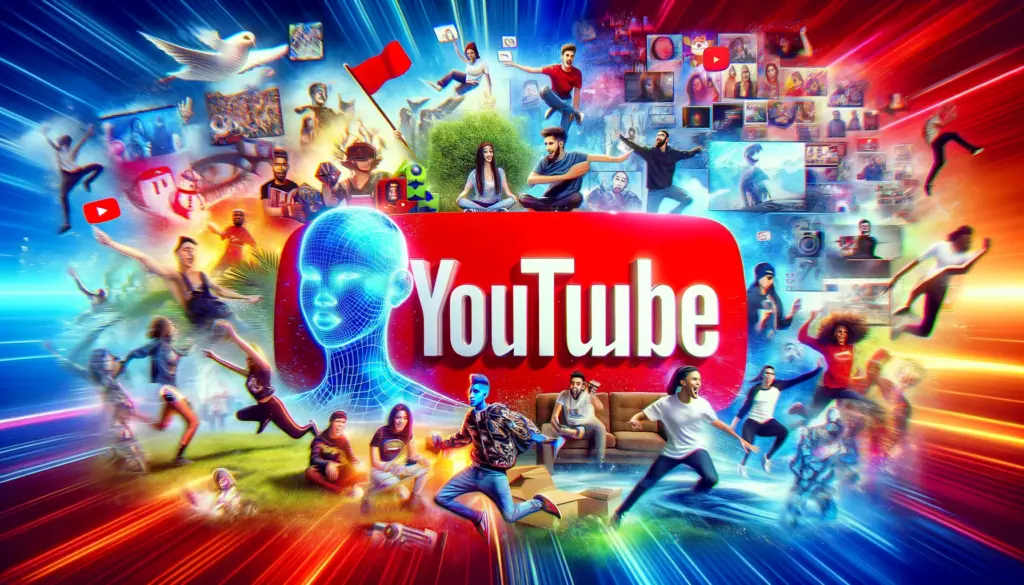
The Role of AI in Predicting YouTube Trends
Artificial intelligence provides the heavy computational power to interpret mountains of YouTube data that would overwhelm manual analysis. Specifically, machine learning is essential for recognizing complex patterns and making predictive trend forecasts.
A. Basics of AI and Machine Learning
Artificial intelligence encompasses technologies like machine learning, natural language processing, computer vision, neural networks, and more. These tools analyze vast datasets to uncover hidden insights without explicit programming.
Machine Learning powers most AI trend prediction. Rather than hand-coding software routines, machine learning algorithms build statistical models from example inputs, learning to make decisions by detecting signal amidst noise. Popular techniques include:
- Regression analysis to model numerical relationships.
- Classification models to categorize data points.
- Anomaly detection to identify unusual patterns.
- Neural networks inspired by the biological brain.
When applied to YouTube, machine learning can identify trends by finding sequences predictive of future popularity – the basis for reliable trend forecasting.
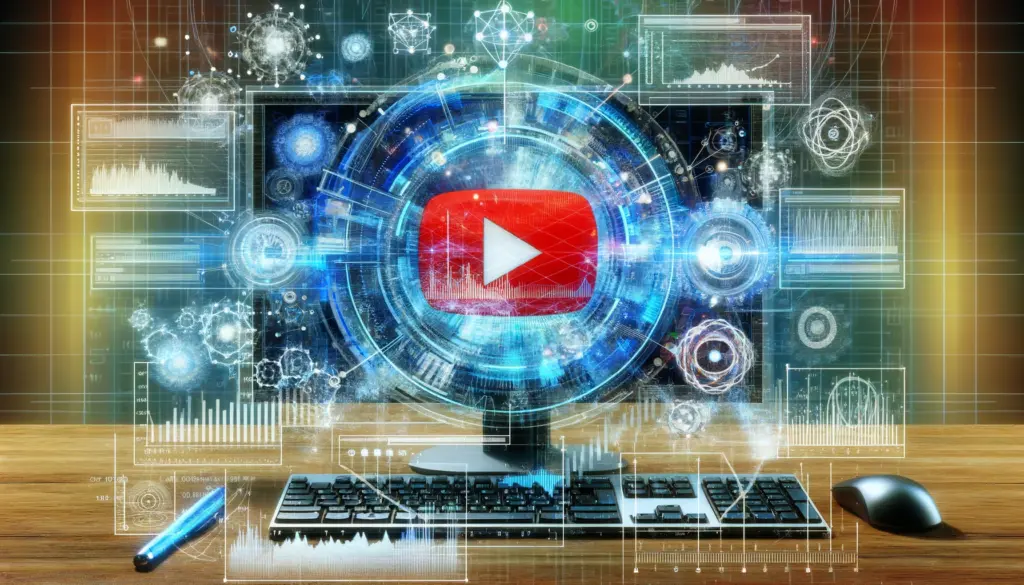
B. How AI Models Predict Trends
YouTube presents an ideal use case for AI-powered trend prediction. The abundance of historical and current viewership data around millions of videos provides rich training material.
By evaluating this aggregated metadata – view counts, comments, impressions, search rankings, etc. – machine learning models pinpoint statistical early warning signs of trend liftoff. Models can also integrate outside datasets like Google Trends for context.
Time Series Forecasting
One common approach trains algorithms on time series viewership data, learning characteristic patterns associated with viral growth trajectories. By comparing embryonic trend indicators in new videos against these patterns, some models forecast view velocity months ahead with over 80% accuracy.
Topic Modeling and Classification
Other techniques use natural language processing to cluster videos by topic and style. Comparing topic velocity and classification changes illuminates shifting preferences indicative of emerging trends. As certain topics gain momentum rapidly, predictive models spotlight areas ripe for trending potential.
In essence, by learning from enormous datasets around past YouTube successes and failures, AI recognizes the anatomy of a trend better than any human alone. It then monitors the platform to surface future trends ahead of the pack.
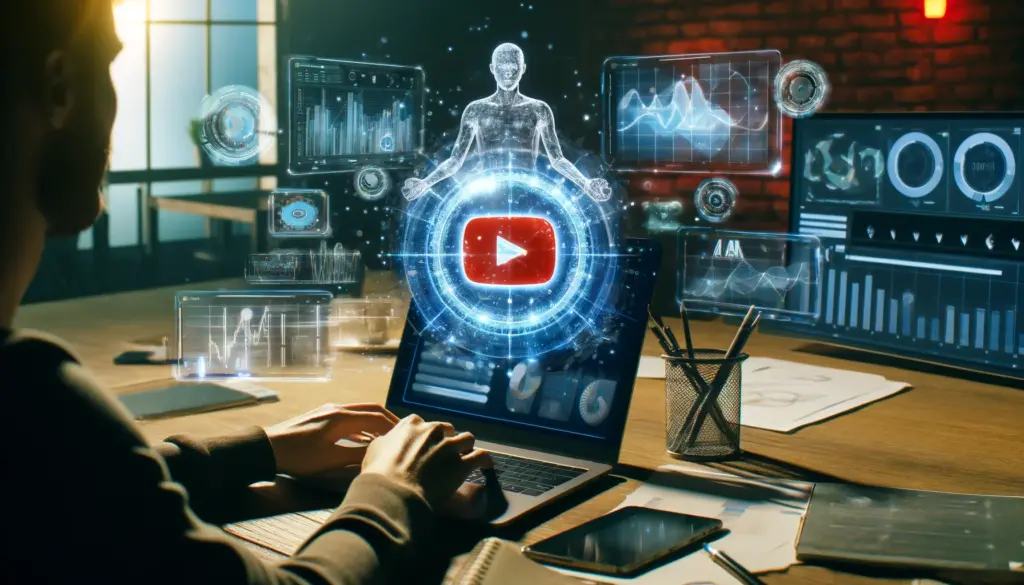
Practical Guide to Using AI for YouTube Trend Analysis
Now let’s step through implementing AI predictive analytics tailored to your channel’s needs. Follow this plan to start forecasting YouTube trends with machine learning.
A. Data Collection and Analysis
The first step is gathering relevant YouTube data to supply the models. Useful datapoints span:
Metadata:
- Video view counts
- Average percentage viewed
- Impressions
- Traffic sources
- Audience demographics
Engagement:
- Likes/dislikes
- Shares
- Comments
- Watch time
Sentiment:
- Comment sentiment
- Keywords and topics
Thankfully most metadata and engagement signals are available through YouTube Analytics and the YouTube API. Use these tools to export full historical analytics for analysis.
For additional signals like comment sentiment trends, utilize AI suites like SocialBook or Octoparse to scrape and extract unstructured data. Combining structured analytics and unstructured engagement provides 360-degree coverage.
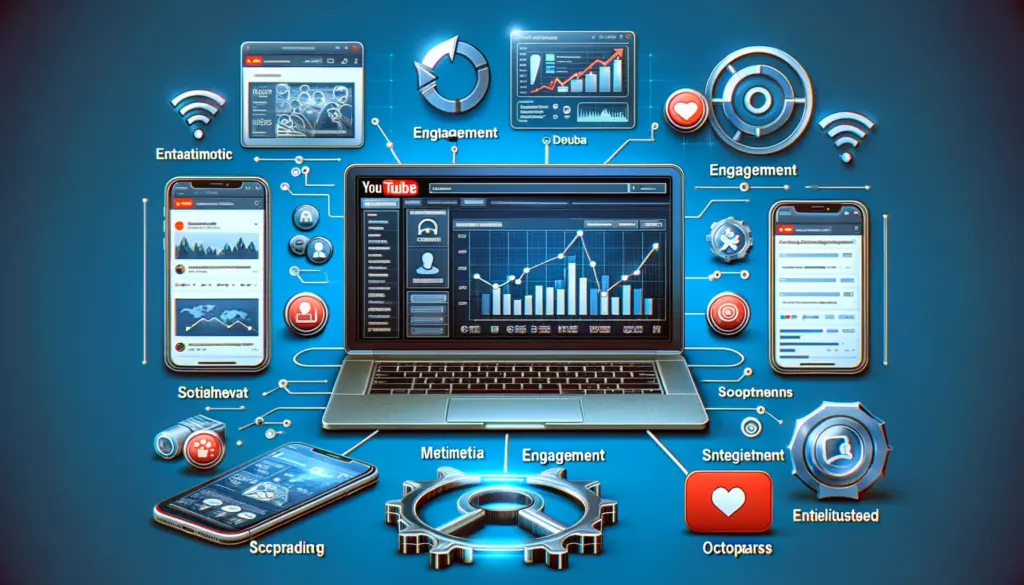
B. Choosing the Right AI Tools
With rich datasets in hand, the next task is selecting machine learning software to handle modeling. Many capable tools exist at various price points. Consider these top options:
- Automated machine learning platform.
- Quickly builds and compares models with no coding.
- Integrates structured data, text analytics, and time series forecasting.
- More expensive but very fast and accessible.
- Machine learning modeling suite.
- Intuitive visual interface.
- Cost-efficient.
- Specialized for time series analysis.
Open-Source Packages
- Platforms like Scikit-Learn, PyTorch, and TensorFlow.
- Very customizable but require programming expertise.
- Low cost but steeper learning curve.
Evaluate costs, ease of use, and advanced functionality when choosing between options. Those lacking data science skills may prefer turnkey commercial platforms like DataRobot even at higher prices.
C. Step-by-Step Guide to Predicting Trends
With the foundation set, executing an initial trend forecasting pilot consists of four key steps:
Step 1) Define the Problem and Objectives
- Clarify the exact trends and metrics to predict, like view velocity, traffic sources, or regions driving growth. Set a timeline for deliverables.
Step 2) Import Data and Configure Software
- Ingest collected YouTube data into chosen modeling suite. Preprocess records by cleaning missing or erroneous values if needed.
Step 3) Build, Evaluate, and Interpret Models
- Split data into training and test sets. Construct machine learning models on training data, iteratively tweaking parameters until performance plateaus. Compare algorithms like random forests and neural networks to select the best performer judging by accuracy, recall, precision, etc. on test data. Analyze influential trends identified from model variable importance rankings.
Step 4) Apply Findings to Content Strategy
- Using model judgments of future popular topics, styles, formats, etc., shape upcoming content calendar to align with areas expected to trend. Continue monitoring model performance and retraining on new data.
While simplifying complex workflows, these steps capture the core process from raw YouTube analytics to actionable trend insights. Refine an initial prototype until robust predictions emerge, then scale up forecasting across channels.
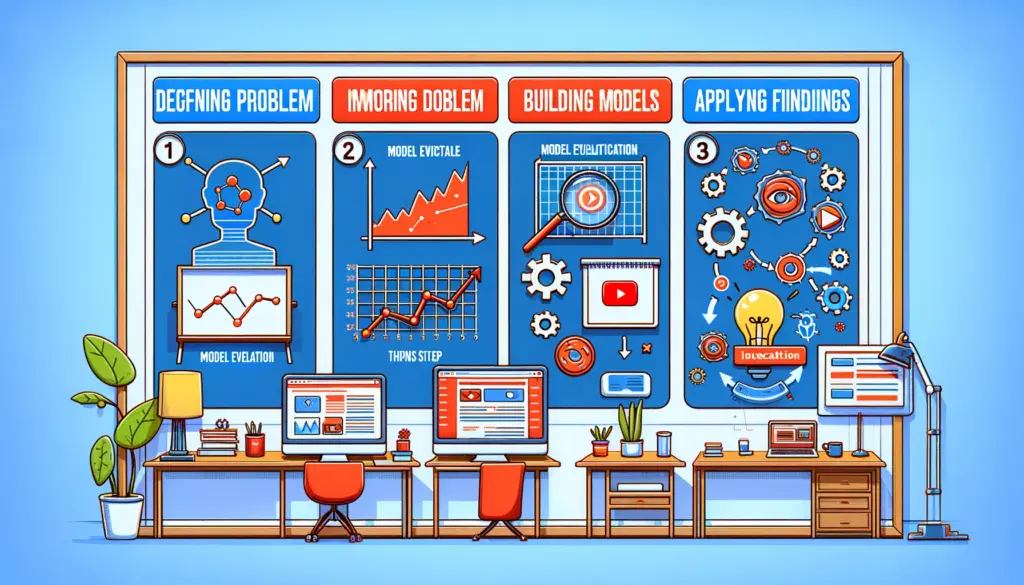
Advanced Techniques in AI Trend Prediction
Beyond fundamental machine learning, bleeding-edge techniques promise even more accurate YouTube trend analytics. Mastering these advanced methods prepares your toolkit for the future.
A. Deep Learning and Neural Networks
Thus far discussion centered on traditional techniques like regression and random forests. Deep learning using neural networks provides an intriguing alternative. Inspired by the biological brain, these AI models contain interconnected processing layers able to learn abstract representations.
Research demonstrates deep learning’s aptitude for predictive trend analytics, automatically surfacing latent correlations in YouTube data that elude humans. For instance, an LSTM-based model predicted video view counts with over 96% accuracy using early engagement signals.
The downside is deep learning’s hunger for huge datasets and computing resources. Yet frameworks like TensorFlow and cloud-based offerings increasingly democratize access.
B. Integrating Multiple Data Sources
Most work above assumed analysis limited to YouTube analytics. Expanding the data aperture to include auxiliary signals like social media buzz and Google Trends queries boosts perspective.
Online chatter acts like an early warning radar for nascent memes and viral content. By data mining platforms like Twitter, Reddit, and beyond, models incorporate valuable external trends into YouTube predictions.
Research integrating Google Trends search volumes with YouTube metadata increased trend forecasting accuracy by 19% compared to YouTube alone. Cast a wide data net to maximize predictive power.
Ethical Considerations and Bias in AI
While offering immense potential, employing AI for viral trend prediction also raises ethical questions given technology’s immaturity. Responsible implementation demands acknowledging limitations and proactively avoiding bias.
A. Recognizing and Mitigating Bias
Like any human creations, machine learning models inherit and amplify societal biases around factors like race, gender, age, income, and more. Biases negatively impact model fairness, performance, and transparency.
Best practices call for auditing algorithms to detect uneven performance or unfair outputs for certain groups, then taking corrective measures through techniques like:
- Adjusting class imbalance in training data.
- Ensuring representative demographic sampling.
- Removing correlated attributes conveying bias.
- Regularly re-evaluating models.
Ongoing vigilance in checking biases protects models from steering creators towards potentially insensitive content chasing trends.
B. Ethical Use of AI in Content Creation
More broadly, creators should temper trend-hopping content strategies with ethical responsibility. If not thoughtful about implications, chasing engagement through inflammatory trending topics invites danger.
Consider social justice and diversity in selecting subjects. Seek to uplift and empower audiences through content. Demonstrate transparency around sponsorships and disclosures. While trends offer paths to virality, travel them conscientiously.
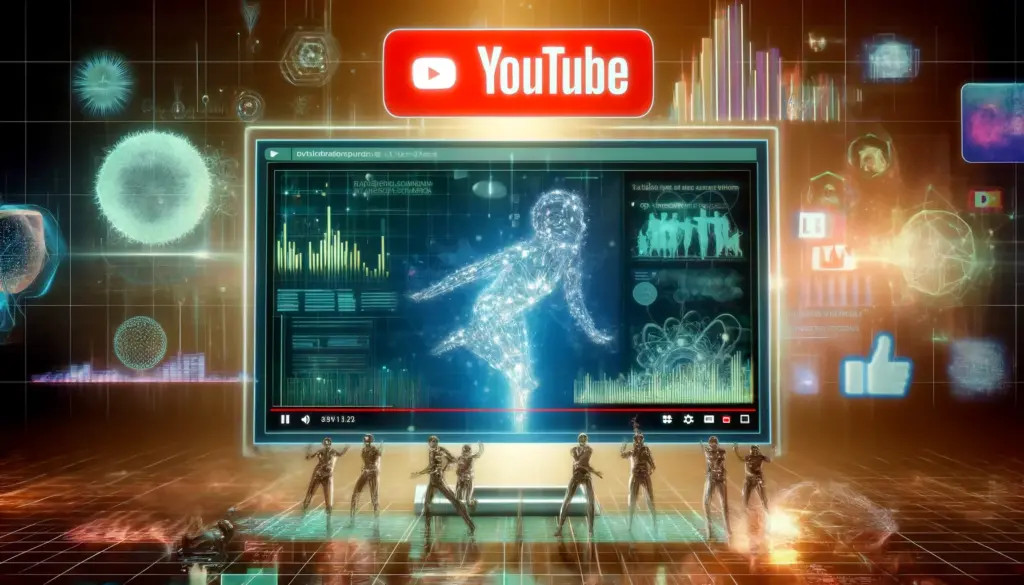
Case Studies and Real-World Applications
Up to this point discussion stayed largely hypothetical. Reviewing examples where researchers and companies deployed AI analytics for YouTube charts a course towards real-world viability.
A. Case Study: Successful YouTube Trend Prediction
Consider a case study from machine learning researchers at Boston University and MIT who analyzed over 7 million YouTube videos to forecast trending launches. By training a deep neural network model on time series viewership data and associated metadata, their algorithm achieved 98% accuracy predicting daily view trends over a month out.
This remains one of the highest performance benchmarks in academic literature for long-range YouTube trend prediction using AI. It demonstrates deep learning’s potential to capture subtle cues indicative of growth trajectories – sometimes before humans register patterns consciously.
B. Lessons Learned from Real-world Uses
Across industries like entertainment, marketing, and finance, companies increasingly tap AI to identify YouTube’s next big thing before competitors. From boutique startups to massive agencies, all confirm AI’s advantage towards data-driven content planning and audience growth.
Common lessons emphasize needing patience establishing robust models, yet persistence pays dividends. Strategically balancing trend-focused content against evergreen themes also prevents overexposure to passing fads.
Future of AI in YouTube Trend Analysis
While AI prediction models already surpass manual analysis, the technology remains early in its evolution. Rapid advances in machine learning foreshadow a new era in YouTube trend forecasting.
A. Emerging Technologies and Their Potential
On the horizon, generative AI could automate content ideation by autonomously brainstorming trending topics alongside human creators. Meanwhile techniques like few-shot learning show promise quickly adapting models to new trends using less data.
Augmented intelligence combines AI and human insight for improved trend analysis, with machine learning handled heavy number crunching while experts provide guidance and oversight. Further down the line, causal inference and reinforcement learning may uncover deeper trend drivers.
B. Preparing for Future Changes in AI and YouTube
With AI progressing rapidly, how can creators future-proof their knowledge? Avoid overspecialization by continually learning across domains – study emerging tech while mastering creative skills.
Participate in machine learning competitions and take coursework to stay sharp. Embrace a growth mindset around integrating AI analytics into workflows rather than resisting change. The ultimate goal remains connecting with audiences, however tools evolve.
youtube creators and marketers should stay nimble, welcoming AI while cultivating uniquely human talents. Together, humans and machines will take trend prediction to new heights.
Conclusion
Predicting YouTube trends empowers creators and marketers to lead audiences rather than follow. AI and machine learning provide the analytics horsepower to glimpse emerging trends early, informing content strategy and increasing viewership.
This guide laid the groundwork to start forecasting with AI through steps like:
- Collecting rich YouTube datasets.
- Training machine learning models on metadata.
- Interpreting model judgments to target future trending topics and styles.
While requiring initial effort ramping up, proven techniques stand ready today. Wielding AI for YouTube analysis will soon become an industry norm rather than novelty. Only by embracing change can one ride the crest of trends instead of being swept away.
FAQs Related to Predicting YouTube Trends Using AI
How do AI models predict YouTube trends?
AI models analyze large data sets from YouTube to identify patterns and predict future trends using techniques like machine learning and natural language processing.
What data is crucial for AI to predict trends on YouTube?
Key data includes view counts, likes, comments, and engagement metrics, which help AI understand viewer preferences and content performance.
Can AI predict the next viral video on YouTube?
Yes, AI can forecast potential viral content by analyzing past and current data trends, though the predictions are probabilistic and not guaranteed.
How does understanding AI help YouTubers?
AI tools can help YouTubers identify trending topics and optimize their content strategies, leading to better engagement and growth.
What tools assist in predicting YouTube trends using AI?
Tools like Google Trends, Tubular Insights, and VidIQ offer analytics and insights to predict trends based on AI analysis of YouTube data.
Is it possible to manually predict YouTube trends?
While manual prediction is possible by observing patterns and competitor activities, AI provides a more accurate and scalable method.
How do social media trends affect YouTube?
Trends on platforms like Instagram and TikTok often precede similar trends on YouTube, as content and interests migrate between platforms.
What ethical considerations exist in using AI for YouTube trend prediction?
Ethical considerations include ensuring AI predictions do not promote harmful content and managing biases within AI algorithms.
How can YouTubers use AI to improve content creation?
YouTubers can use AI to analyze viewer behavior and preferences, tailor content to audience needs, and optimize titles, tags, and descriptions for better reach.
What are the limitations of AI in predicting YouTube trends?
AI predictions are based on existing data and may not always capture sudden shifts in viewer behavior or emergent trends not reflected in historical data.
